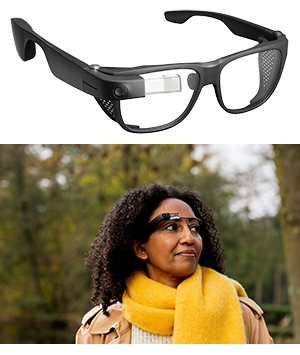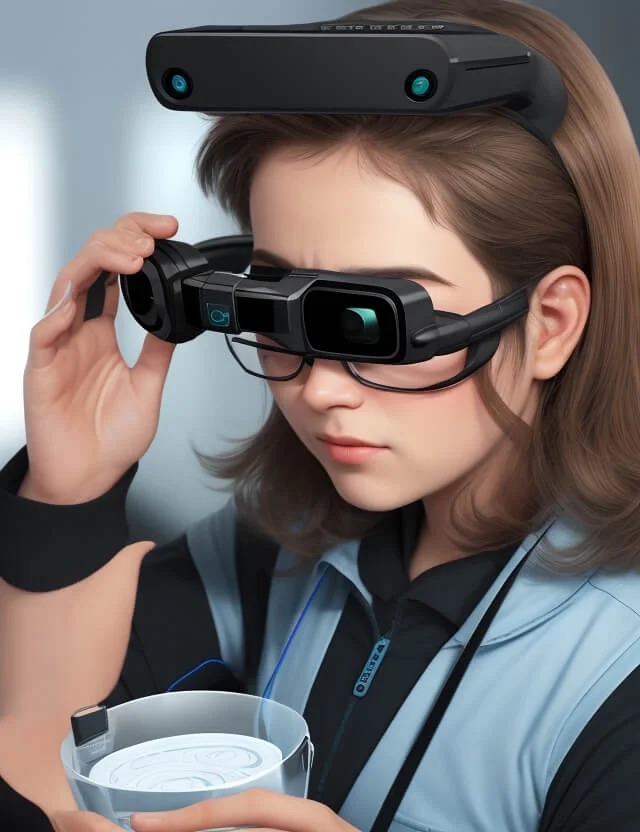OCR Devices for the Blind: Breaking Barriers with Optical Character Recognition
OCR Devices for the Blind: Breaking Barriers with Optical Character Recognition
Blog Article
Empowering Self-reliance With Assistive Innovation for the Blind
The combination of assistive modern technology for individuals that are visually impaired or blind stands for a significant improvement in fostering freedom and enhancing high quality of life. With a variety of gadgets-- from display readers to cutting-edge responsive devices-- these technologies not just facilitate navigation and interaction however additionally promote social addition and involvement in various facets of life.
Understanding Assistive Modern Technology
Although assistive innovation has evolved considerably throughout the years, its basic purpose remains the exact same: to boost the high quality of life for individuals with impairments, particularly those that are blind or aesthetically impaired. This innovation encompasses a wide series of tools and tools that facilitate independence and capability in daily activities.
Assistive technology can be categorized right into state-of-the-art and low-tech options, each designed to satisfy details requirements. State-of-the-art devices typically consist of software program applications, specialized hardware, and flexible devices that use innovative modern technology to supply assistance in different contexts. On the other hand, low-tech options may entail everyday items that are changed to improve availability, such as magnifiers or responsive pens.
The combination of assistive innovation into the lives of individuals who are blind or visually hindered not only promotes autonomy but likewise promotes social addition and engagement in professional and educational settings. By leveraging these technologies, customers can navigate their environments, gain access to details, and connect effectively, consequently improving their overall lifestyle. Recognizing assistive technology is crucial for supporters, specialists, and caretakers who aim to sustain individuals in optimizing their prospective and achieving better freedom.
Types of Assistive Tools
Assistive devices for the blind and visually impaired are vital tools that improve daily living by attending to specific obstacles come across by customers. These devices can be extensively classified right into three primary types: optical gadgets, digital tools, and sensory tools.

Sensory devices, such as Braille display screens and responsive maps, offer alternative methods to obtain information. Braille displays convert digital message into Braille, allowing customers to check out touch. Tactile maps supply spatial understanding with elevated lines and appearances, permitting much better ecological understanding.
With each other, these assistive devices encourage people with visual impairments to engage even more completely with their environments, promoting greater self-reliance and self-confidence in everyday activities.

Influence On Life
The combination of assistive innovation right into the day-to-days live of individuals who are visually damaged or blind dramatically enhances their ability to browse and interact with the world around them. Devices such as screen readers, Braille shows, and mobile applications assist in accessibility to details, allowing individuals to engage with electronic material, interact effectively, and manage everyday tasks individually.
Furthermore, technologies like smart glasses and navigating apps offer real-time aid in unknown environments, enhancing flexibility and self-confidence. These devices allow users to determine obstacles, reviewed indicators, and even acknowledge faces, thus fostering a feeling of autonomy in public areas. Furthermore, home automation systems, which can be controlled with voice commands, allow individuals to manage their living environments more properly, enhancing comfort and security.
The impact of assistive innovation expands past sensible jobs; it advertises social inclusion and emotional health. By bridging the void in between people and their environments, these innovations encourage individuals to get involved fully in area activities, go after educational possibilities, and take part in significant relationships. Inevitably, the advancement of assistive technology contributes in redefining the possibilities for individuals who are visually damaged or blind, resulting in a much more available and inclusive culture.
Success Stories and Reviews

An additional effective testimony comes from Mark, a recent college grad that made use of screen analysis software program throughout his academic trip. This modern technology allowed him to accessibility program products and join discussions, eventually causing his effective transition right into the workforce. Mark credit scores assistive innovation for equipping him to attain his job objectives, emphasizing its function in leveling the having fun area for people with visual disabilities.
In addition, recreation center have reported enhanced engagement in their programs many thanks to the intro of easily accessible digital systems. check it out These systems have made it simpler for people to attach, share resources, and assistance one another. These success stories collectively underscore the profound impact of assistive innovation in fostering freedom, improving lifestyle, and damaging down obstacles for the visually damaged and blind neighborhood.
Future Patterns in Assistive Tech
Emerging modern technologies are poised to revolutionize the landscape of assistive technology for people who are visually impaired or blind. Technologies in fabricated knowledge (AI) and device learning are boosting the capabilities of tools, making it possible for more instinctive user experiences. AI-driven applications are progressively able to review and acknowledge items text aloud in real-time, supplying individuals with valuable information about their environments.
Furthermore, improvements in wearable innovation are developing new opportunities for freedom. Smart glasses geared up with enhanced fact functions can overlay vital details onto the customer's visual field, assisting in navigating and interaction with the setting. The combination of Net of Things (IoT) tools is enhancing ease of access in wise homes, allowing users to regulate devices and receive alerts via voice commands or tactile user interfaces.
The advancement of braille screens and responsive comments systems is additionally rising, promoting access to digital web content and enhancing interaction. As these modern technologies continue to progress, they guarantee to boost day-to-day living, academic opportunities, and work prospects for people with aesthetic problems. Continuous collaboration in between technologists, individuals, and campaigning for groups will be crucial in making sure these developments satisfy the demands of the community efficiently.
Verdict
In verdict, assistive modern technology plays an essential role in improving the self-reliance of individuals who are aesthetically impaired or blind. By supplying crucial devices and resources, these innovations assist in boosted navigation, gain access to, and interaction to information, thus cultivating freedom and self-confidence. The transformative influence of assistive gadgets not only advertises reliable interaction with the atmosphere however likewise encourages social inclusion and involvement in various aspects of life, eventually empowering individuals to thrive within their neighborhoods.
The assimilation recommended you read of assistive innovation for individuals that are visually damaged or blind represents a substantial development in fostering freedom and enhancing top quality of life.The assimilation of assistive technology into the lives of individuals that are blind or visually harmed get more not just advertises autonomy but additionally cultivates social inclusion and involvement in specialist and educational environments. Eventually, the innovation of assistive innovation is instrumental in redefining the opportunities for individuals who are blind or visually impaired, leading to a much more inclusive and available society.
Numerous individuals who are blind or visually impaired have actually shared motivating success stories that highlight the transformative influence of assistive technology on their lives.In final thought, assistive modern technology plays a crucial role in enhancing the independence of individuals that are visually impaired or blind.
Report this page